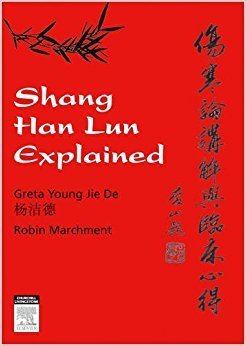Originally published 1976 | ||
 | ||
Pharmaceutical drug books Lingshu Jing, Qianjin Yaofang, Dongui Bogam | ||
18 shanghan lun of zhang zhongjing by hu xishu
The Shanghan Lun (simplified Chinese: 伤寒论; traditional Chinese: 傷寒論; pinyin: Shānghán lùn) or Shanghan Zabing Lun (simplified Chinese: 伤寒杂病论; traditional Chinese: 傷寒雜病論; pinyin: Shānghán zábìng lùn), known in English as the Treatise on Cold Damage Disorders or the Treatise on Cold Injury, is a Chinese medical treatise that was compiled by Zhang Zhongjing sometime before the year 220, at the end of the Han dynasty. It is amongst the oldest complete clinical textbooks in the world (cf. Carakasaṃhitā and the Hippocratic Corpus), and one of the four canonical works that students must study in traditional Chinese medical education today.
Contents
- 18 shanghan lun of zhang zhongjing by hu xishu
- 41 shanghan lun of zhang zhongjing by hu xishu
- Surviving Editions
- References
41 shanghan lun of zhang zhongjing by hu xishu
Surviving Editions
- Song dynasty edition. Collated by scholastic ministers Kao Pao-hen, Lin I, and Sun Chi under the order of the emperor and published in 1065. Reprinted in the Ming dynasty.
- Cheng Wu-chi's Annotated Shang han lun. Extensively read in Japan and China, was widely circulated in Cheng's time. However, many transcriptions and re-transcriptions have stirred up disagreement as to whether it is true to the original.
- Chin kuei yu han ching. This book has the same content as the Song edition with other minor variations in context.
- Kang Ping edition. Kang Ping is the name of the period from 1058-1068 in the Heian era in Japan. It is indispensable for study because it retains the ancient style.
The Song edition is in ten volumes including the first to chapters on pulse diagnosis, the Cheng edition is also in ten volumes but simplified, the Cheng kuei yu han ching is in eight volumes.
Contents
The Shanghan Lun has 398 sections with 113 herbal prescriptions, organised into the Six Divisions corresponding to the six stages of disease:
